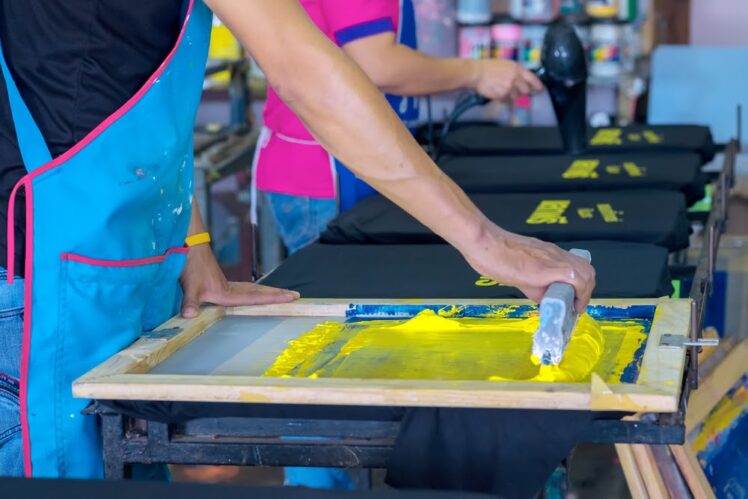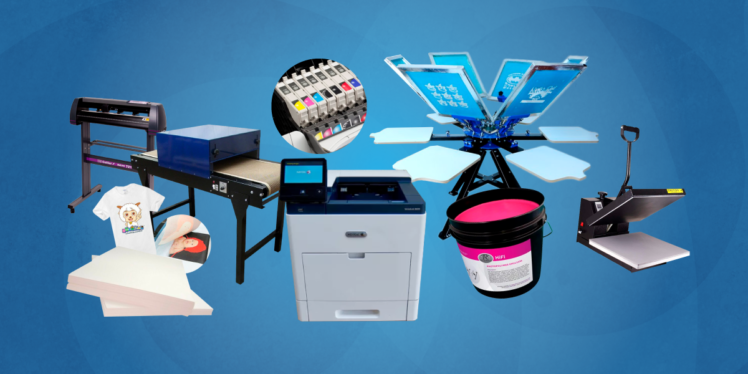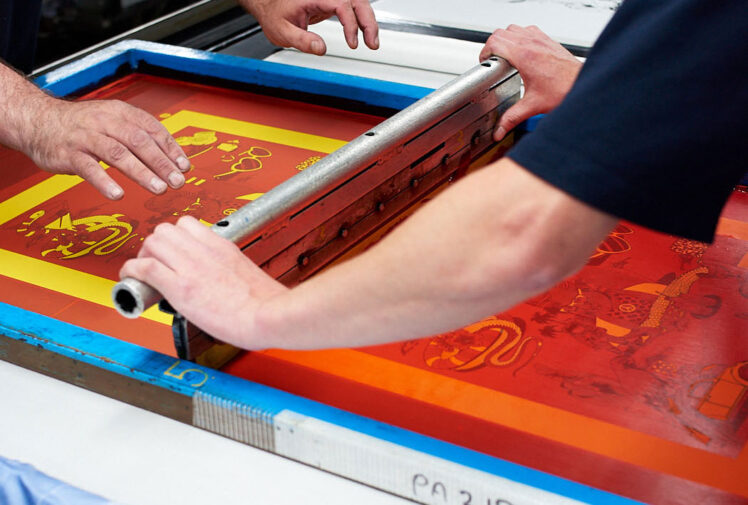Screen Printing Success: Tips, Savings, and Starting Your Business

Screen printing, a printing technique that uses a woven mesh to support an ink-blocking stencil, has been gaining immense popularity due to its versatility and adaptability. This ancient method of printing allows for artistic and commercial expression on various substrates like textiles, ceramics, and paper. With its potential for success and ever-growing demand, delving into the screen printing business can be a rewarding venture.
In this extensive guide, we’ll unfold the myriad of possibilities within screen printing, offering tips, uncovering cost-saving strategies, and guiding you through the intricate steps of commencing your screen printing journey. By journey’s end, you’ll be well-equipped with the knowledge and inspiration to ignite your screen printing endeavors.
The Basics of Screen Printing

Source: wnybookarts.org
Understanding the fundamental concept of screen printing is pivotal for aspiring screen printers. The core of this method involves transferring ink through a mesh screen onto a substrate, with a squeegee used to push the ink through the unblocked pores of the mesh. A variety of equipment and materials are necessary for this process, including screens, inks, squeegees, and exposure units, each playing a significant role in producing the final print.
The importance of meticulous design and image preparation cannot be overstated. The design is the backbone of screen printing, and its preparation will dictate the quality of the finished product. Whether you are creating intricate artwork or simplistic logos, attention to detail in design ensures a polished and professional outcome.
Tips for High-Quality Screen Printing
Achieving premium quality prints necessitates mastery over the craft. Issues like ink bleeding and misalignment can jeopardize the print’s integrity. Selecting the right screen mesh is crucial; a higher mesh count is suitable for detailed designs, while a lower count is optimal for bolder prints. Additionally, knowing your ink is indispensable. Plastisol ink is versatile and user-friendly, while water-based inks are eco-friendly and offer a soft hand feel. Also you should add a print silk screen into the mix.
Addressing these common issues and being discerning in material selection are pivotal in realizing crisp, vibrant prints that captivate and endure. Delving deeper into the nuances of these elements will fortify your proficiency, enabling you to produce exceptional prints consistently.
Cost-Saving Strategies
Embarking on a screen printing venture necessitates prudent financial planning. DIY approaches can be a lifesaver, with handmade screens and exposure units being cost-effective alternatives to commercial options. Buying in bulk and mastering efficient ink usage can significantly reduce operational costs, allowing for a more sustainable business model.
By adopting these strategies, aspiring screen printers can navigate the financial intricacies of the trade, fostering a business model that is not only profitable but also sustainable and environmentally conscious.
Choosing the Right Equipment

Source: sellmerch.org
Selecting essential screen printing equipment is a decisive step in establishing your business. Manual machines are budget-friendly and suitable for small-scale operations, while automatic machines, although more expensive, offer speed and consistency for larger volumes. The balance between cost and efficiency will determine the optimal choice for your business, allowing you to meet demands without compromising quality.
Researching and comparing various options is crucial in making informed decisions, ensuring the selected equipment aligns with your business goals and operational capacity.
Sourcing Materials and Supplies
Securing essential materials and supplies is integral to the screen printing process. Establishing relationships with reliable suppliers and negotiating deals will enable you to acquire quality materials at competitive prices. Eco-friendly options are available for those looking to build a sustainable, conscious business.
Careful selection and sourcing of materials will enhance the overall quality of your prints and contribute to the sustainability and ethicality of your screen printing endeavor.
Marketing Your Screen Printing Business
A strong brand identity, effective online presence, and robust networking are the cornerstones of a successful screen printing business. Word-of-mouth referrals and targeting niche markets are invaluable in building a loyal client base. Delving into the diverse marketing strategies available will enable you to forge a strong brand identity, reach your target audience, and establish your business in the competitive market.
By prioritizing branding and marketing efforts, you can effectively communicate your value proposition and cultivate relationships with potential customers, fostering business growth and stability.
Setting Up Your Workspace
An organized, efficient workspace is paramount for productivity in screen printing. Adhering to safety measures and regulations is non-negotiable to ensure a secure working environment. Optimizing workflow and maintaining an organized workspace will boost productivity and create a conducive atmosphere for creativity and innovation.
Prioritizing workspace design and safety will not only enhance operational efficiency but also contribute to the overall well-being and creativity of the individuals involved.
Managing Finances

Source: deconetwork.com
Effective financial management is the backbone of any successful business. Understanding pricing strategies, managing cash flow, and tracking expenses are critical components in maintaining a profitable screen printing business. By embracing prudent financial planning and budgeting, you can navigate the financial landscapes of the industry, ensuring long-term viability and success.
By mastering financial management principles, you can establish a robust financial foundation, positioning your screen printing business for sustained growth and profitability.
Troubleshooting Common Issues
Identifying and resolving common screen printing issues are crucial for maintaining quality and efficiency. By offering step-by-step solutions and visuals, we aim to equip you with the knowledge to troubleshoot effectively, ensuring the longevity and reliability of your screen prints.
By familiarizing yourself with common issues and their resolutions, you can maintain operational efficiency and ensure the consistent delivery of high-quality prints.
Expanding Your Business
Expanding your screen printing business necessitates strategic planning and diversification. Offering additional printing services and exploring new markets are viable strategies for scaling your operations. By implementing growth strategies and exploring diversification options, you can elevate your business, reaching new heights in the screen printing industry.
Adopting growth and diversification strategies will propel your screen printing business forward, enabling you to seize new opportunities and maximize your market presence.
Conclusion

Source: biddlesawyersilks.com
Embarking on a screen printing journey can be challenging yet immensely rewarding. The insights provided in this guide aim to empower and inspire you to take the first steps towards building your screen printing empire. Success stories of individuals who ventured into this artistic domain exemplify the limitless possibilities within screen printing.
By assimilating the knowledge and strategies discussed, you can navigate the complexities of the screen printing world, laying the foundation for a successful and fulfilling journey in this dynamic and creative field.





